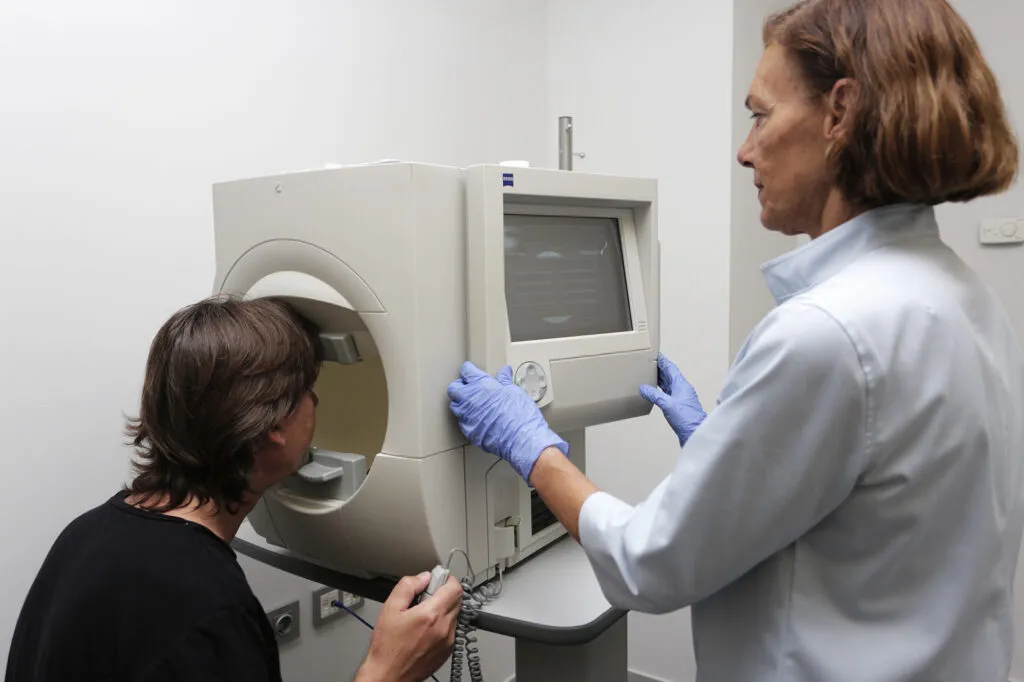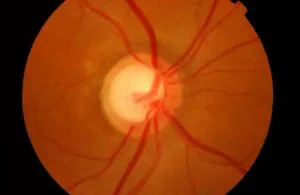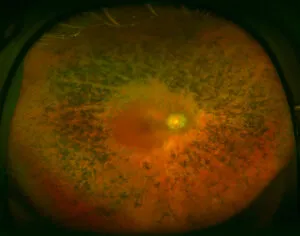Diagnostic tests
Campimetry

What is campimetry?
Campimetry, also known as visual perimetry, is an ophthalmological test that allows us to measure the visual field, i.e. the vision breadth once the eye is fixed on a reference point.
It is a subjective diagnostic test, as it depends on the patient’s collaboration when responding to the different light stimuli that are presented.
In a dark or dimly lit room, you will be sitting with your chin and forehead resting on the computerised campimeter. The test is carried out in a monocular fashion (with the opposite eye occluded) by maintaining the eye fixed on the central point of the concave screen, on whose background light flashes of different intensities will be projected in different locations. Without looking away from the central point, you will have to press a button each time you recognise one of these lights, and, based on the responses, a map of the analysed visual field will be automatically created.
What do we use campimetry for?
Campimetry is used to detect and measure the size and intensity of visual field alterations, such as the presence of scotomas or “blind areas”, depressions, contractions and reduced sensitivity. This is characteristic of some diseases of the retina, such as retinitis pigmentosa, and of the optic nerve, such as glaucoma or optic neuritis. Moreover, pathologies and brain tumours or general diseases, such as diabetes or high blood pressure, can also show errors or alterations in the visual field.
How do we perform campimetry?
- There is no need for any previous preparation or pupil dilation.
- As it is a non-invasive test, it does not present any risks or contraindications.
- It is painless, as it does not involve direct contact with the eye at any time.
- During the test, you should be as focused as possible to achieve the most reliable results.
- A campimetry usually takes between 5 and 10 minutes per eye, but can sometimes be extended.
- Although the visual field can be studied using other methods, at the Miranza clinics we do this automatically and by means of computers.

